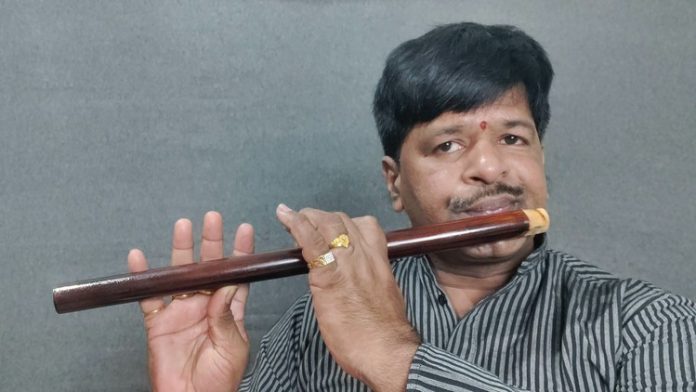Note:
If you guys are getting coupon expired or course is not free after opening the link, then it is due to the fact that course instructors provide only few hundreds or thousands of slots which get exhausted. So, try to enroll in the course as soon as it is posted in the channel. The Coupons may expire any time for instant notification follow telegram channel


Bhadrachala Ramadasu
There was once a boy who lived in a small village in the State of Andhra Pradesh. One day, he found a very beautiful parakeet and, enchanted by it, brought it home. He kept the parakeet in a cage and enjoyed looking at it everyday, as the poor parakeet looked miserable and wanted to fly back to its home. Everyday, the parakeet sang, “Rama, Rama, Rama, Rama, Rama, Rama, Rama….” and so on. The boy laughed with pleasure every time the parakeet sang this, delighted by the sweet voice of the small bird. The boy kept this parakeet for 12 days before feeling sympathy for it, and letting it go. The parakeet flew away in happiness, delighted to be with its family again. Soon, the boy grew into adulthood, married, led a happy house holder life, and died in old age, satisfied with his life.
This boy got reborn as Kancherla Gopanna in 1620 C.E. in the village of Nelakondapalli in Northern Andhra Pradesh, the only son to a simple Brahmin family. His father was Linganna Murthy and his mother was Kamamba.
Kancherla Gopanna’s uncle, Akkanna, was the administrative head in the court of Qutub Shahi Sultan Abul Hassan Tana Shah, the Mughal ruler of the area. Akkanna, due to his influence in the King’s court, secured Kancharla Gopanna a job as Tahsildar (revenue collector) of Palvoncha Paragana. Along with his wife Kamala, who was carrying at the time, Kancherla Gopanna went to Palvoncha Paragana, and did his official duties honestly and kindly. The people of Palvoncha Paragana loved and respected Kancharla Gopanna, and listened to anything he said. It was around this time that Kancherla Gopanna became an ardent devotee to Lord Ramachandra, and composed many kritis (Carnatic Music songs) on him. Some famous compositions among many others are Anta Ramamayam and Bhadra Shaila Raja Mandira. Also, a son was born to Kancherla Gopanna and his wife Kamala. They named him Raghu Rama.
The Mughal King Tana Shah had a wife named Sitara, who disliked Kancherla Gopanna, because she had hoped the job of Tahsildar would go to her own nephew. Queen Sitara one day sent some of her trusted men to kill Kancherla Gopanna at the dead of night, so that once he died, her nephew could ascend the post. One night, when Kancherla Gopanna was walking home through a forest after collecting revenue from the people, Sitara’s people jumped out from behind some trees and attacked Kancherla Gopanna, who prayed to Lord Rama to save him. Lord Rama, pleased with the humble devotion of Kancherla Gopanna, came in the farm of a fierce tiger and scared away Sitara’s men. Kancherla Gopanna, with tears of happiness in his eyes, knew that the tiger was Lord Rama, and composed a kriti then and there, in which he asked Rama that, “now that you gave your darshan, I want the darshan of Sitamma talli.”
One day, a few years later, Kancherla Gopanna went to Bhadrachalam for a fair, and also to see the holy site of the parnasala where Rama stayed with Sita and Lakshmana for some time during his exile. Near Bhadrachalam, there was also another site where Shabari had lived before getting moksha from Lord Rama. However, Kancherla Gopanna was very disappointed when he saw the temple of Lord Rama there, which held lots of significance for Telugu people, because that temple was the place where Potana had received darshan from Rama to write the Bhagavatham. The temple was very dilapidated, and unkempt. No priests did puja in it, and it was utterly neglected by the people of Bhadrachalam.
Kancherla Gopanna decided to raise funds and reconstruct the temple himself, with the help of his wife, son, and the people. Everyone donated something of theirs, like gold necklaces, bangles, rings, gold coins, etc, for the reconstruction of the temple, and along with Kancherla Gopanna’s wealth, they made a pretty hefty sum of money. It was during this time that Shri Rama, very pleased with Kancherla Gopanna, appeared to him in a dream and gave him the name of Ramadasu (servant of Lord Rama). From there on, Kancherla Gopanna was known as Ramadasu, one of the great devotees of Lord Rama.










![Passive Income: Create & Sell Online Courses [Full Course]](https://oyoads.in/wp-content/uploads/passive-income-create-sell-online-courses-full-course_661cb1a9a14ff-218x150.jpeg)
![AI for Business Strategy & Planning [Masterclass]](https://oyoads.in/wp-content/uploads/ai-for-business-strategy-planning-masterclass_661cb19898162-218x150.jpeg)
![[100% FREE]How to Make Passive Income without experience or a Website](https://oyoads.in/wp-content/uploads/2020/05/images-16-324x235.jpeg)
![[100% Discount]The RedTeam Blueprint – A Unique Guide To Ethical Hacking](https://oyoads.in/wp-content/uploads/2020/04/The-RedTeam-Blueprint-A-Unique-Guide-To-Ethical-Hacking-100x70.jpg)





![[100% Free]Cyber Security Crash Course](https://oyoads.in/wp-content/uploads/2020/05/IMG_20200522_202330_661-218x150.jpg)



![[100% Free]Python Bootcamp 2020 Build 15 working Applications and Games (31.5 Hours)](https://oyoads.in/wp-content/uploads/2020/05/Python-Bootcamp-2020-Build-15-working-Applications-and-Games-1-100x70.jpg)

![[100% Free]Java Programming: Complete Beginner to Advanced](https://oyoads.in/wp-content/uploads/2020/05/IMG_20200519_054150_522-100x70.jpg)
